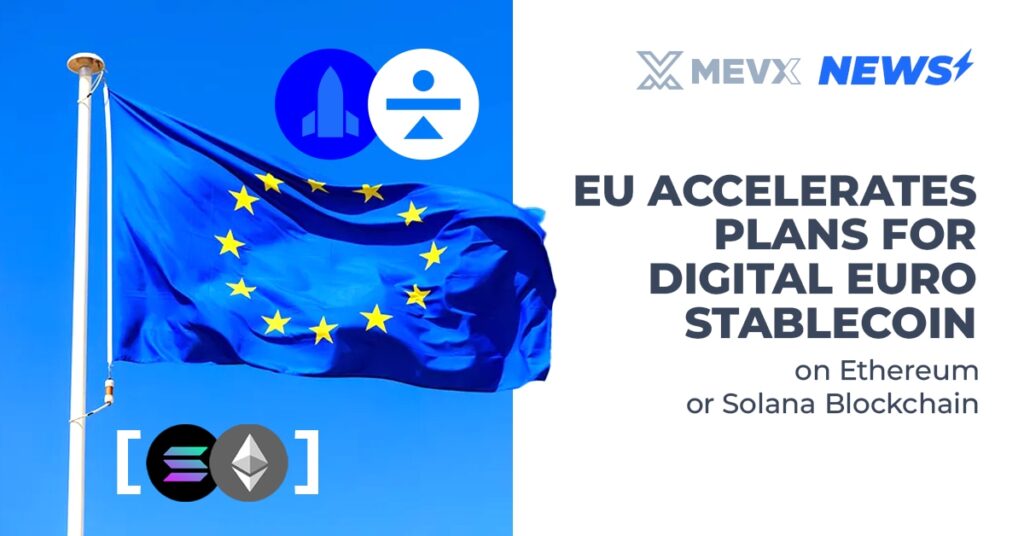The European Union is accelerating its plans for a digital euro stablecoin. This central bank digital currency (CBDC) could soon roll out on public blockchains like Ethereum or Solana, signaling a shift toward more open and interoperable systems. But why these two networks over others? Let’s dive into the details and explore what this means for Europe’s financial future.

The Push for a Digital Euro Stablecoin
The EU’s decision to speed up the digital euro stablecoin project stems from growing competition in the stablecoin arena. With the US advancing its own stablecoin regulations through the Genius Act, European policymakers are eager to maintain the euro’s sovereignty in the digital economy.
The European Central Bank (ECB) envisions the digital euro stablecoin as, secure alternative to cash, enabling seamless payments, cross-border transactions, and integration with tokenized finance.
Initially planned for a private blockchain to prioritize privacy and control, the ECB is now eyeing public options for broader adoption.
A potential rollout could happen as early as 2026, transforming everyday banking and challenging private stablecoins like USDT or USDC.
Why Ethereum or Solana? A Strategic Blockchain Choice
At the heart of this acceleration is the choice of blockchain infrastructure. The EU is considering Ethereum and Solana for their proven capabilities in handling high-volume transactions while fostering innovation.

Here’s a breakdown of why these stand out:
- Ethereum’s Strengths
- As the pioneer of smart contracts, Ethereum boasts a massive ecosystem with robust security features. It’s home to numerous DeFi projects and stablecoins, making integration straightforward.
- Its layer-2 solutions reduce congestion, ensuring scalability for a continent-wide currency. Compared to alternatives like Bitcoin (which lacks advanced programmability) or Polygon (which is Ethereum-based but less mature standalone), Ethereum provides unmatched reliability and developer tools.
- Solana’s Advantages
- Known for lightning-fast speeds, up to thousands of transactions per second, Solana excels in low-cost, high-throughput operations, ideal for retail payments.
- Its proof-of-history consensus minimizes fees and delays, an edge over slower networks like Cardano or Avalanche, which have faced scalability issues.
- Solana’s growing DeFi presence also positions it as a forward-thinking choice, though it has occasional downtime concerns that the EU is evaluating.
Ethereum and Solana strike a balance: they’re decentralized enough for trust but scalable for mass use, helping the EU avoid dependency on US-dominated tech.
Implications for the Future
This pivot could legitimize public blockchains in mainstream finance, boosting adoption of Ethereum and Solana while enhancing Europe’s digital identity wallet initiatives. However, challenges like privacy and regulatory hurdles remain.
As the EU accelerates plans for the digital euro stablecoin with potential rollout on Ethereum or Solana blockchain, it could reshape global finance.
Stay ahead of these developments, follow our MevX blog for the latest insights on crypto and fintech trends!
Share on Social Media:
